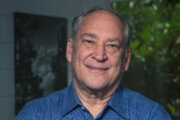Underserved populations in the U.S. face significant barriers to accessing health care, with grave consequences. A 2024 Kaiser Family Foundation analysis, for example, showed Black infants were more than two times more likely to die than white infants and the life expectancy for American Indian or Alaska Native people was almost 10 years shorter than for white people.
With increased awareness about health care disparities, premed students have increasingly engaged in clinical work and research to improve the health of underserved populations and deepen their understanding of compassionate, patient-centered care. As a result, many premeds are writing about their interests in helping the underserved on their medical school applications.
One way to stand out in discussing your mission to improve the health of underserved communities is to find specific populations and specific health care issues that you want to improve. Here are six underserved populations, issues they may face, and how you can get involved as a premed.
Individuals From Low-Income Communities
Individuals from low-income communities often struggle to afford health care services as financial demands like housing, food and transportation costs take priority. Already strapped for cash, they may be reluctant to see a doctor because of the significant expense. In acute situations, they may feel symptoms like chest pain but not see a doctor until symptoms become too severe to withstand, often resulting in a more serious condition. In the long run, individuals with low socioeconomic status may forgo important preventative health measures and not see a doctor regularly for chronic disease maintenance.
They face other barriers to good health, including unsafe housing, inadequate transportation to appointments, limited availability of healthy food choices and lack of places to exercise. Many low-wage jobs also do not offer employer-sponsored health insurance, and low-income individuals may be uninsured or have to rely on government programs like Medicaid, which have more limited coverage.
Premedical students can help these individuals by volunteering in hospitals or free clinics and organizing health care programs in underserved communities. At free clinics, they can help patients understand their health care options, help with Medicaid enrollment, and coordinate specialists and treatment plans. They can also connect patients with resources like food banks, housing assistance and transportation services.
Premeds can organize health education workshops or one-on-one counseling sessions focused on disease prevention, nutrition, hygiene and chronic disease management. They can participate in free health screenings and health fairs offering blood pressure checks, diabetes screenings and flu shots.
These initiatives help detect health issues early, reducing the long-term burden on the health care system.
Racial and Ethnic Minorities
Racial and ethnic minorities in the U.S. face significant health care disparities. According to Centers for Disease Control and Prevention data, they often experience higher rates of chronic diseases, higher rates of premature death and lower life expectancy than white Americans. For example, African Americans were 30% more likely than white people to die prematurely from heart disease.
When shadowing doctors or working in clinical settings, premeds should understand how cultural beliefs influence patients’ decision-making and preferences. People of color often have different perceptions and expectations about health care that are influenced by their cultures. Premed students can learn more about cultural competency and think about how they will tailor patient care and treatment recommendations based on a patient’s cultural beliefs.
Individuals with Disabilities
Individuals with mental, physical or developmental disabilities, including visual and hearing impairments, often have a harder time accessing health care. They may need transportation accommodations to get to a health care facility or be unaware that they need medical help.
One popular activity among premeds who are interested in working with individuals with disabilities is teaching or coaching children with disabilities, such as volunteering for the Special Olympics. Premed students can also serve as caregivers for an individual with disabilities, helping them with daily tasks. Finally, premeds can be involved with public policy and advocacy for individuals with disabilities, striving for more accessibility and greater inclusion.
[Related:Ways Premed Students Can Work With People With Disabilities]
LGBTQ+ Populations
LGBTQ+ individuals face discrimination and stigma and may experience bias or mistreatment from health care providers. Discrimination may cause refusal of care for LGBTQ+ patients, inappropriate comments and a lack of understanding about LGBTQ-specific health needs.
Premeds can work in clinics that specialize in providing care for LGBTQ individuals, learning the specific health care needs of LGBTQ individuals like hormone therapy or sexual health services. They can participate in advocacy efforts for more inclusive health care policies, such as lobbying for comprehensive insurance coverage for gender-affirming treatments, supporting anti-discrimination laws, or promoting training programs that teach health care professionals to be more culturally competent in caring for LGBTQ individuals.
Homeless Individuals
Homeless individuals and others facing housing insecurity often struggle to afford health care and frequently are food-insecure. They may suffer from drug addiction and alcohol use disorders, which can have serious medical consequences such as drug overdoses and liver damage. In climates with extreme weather, they can suffer dehydration or hypothermia.
Premed students can volunteer in homeless shelters or with organizations and initiatives that provide them medical care. Premeds interested in substance abuse care can volunteer in addiction recovery service organizations.
[READ: 5 Key Characteristics of Successful Medical School Applicants.]
Immigrant and Refugee Communities
Immigrants and refugees face numerous challenges when navigating the U.S. health care system, including language barriers, lack of health insurance, cultural differences, fear of deportation, discrimination and limited knowledge of the health care system. Many — especially undocumented immigrants — lack health insurance, restricting their access to regular medical care and forcing them to rely on expensive emergency services. The fear of deportation or legal repercussions further discourages many undocumented individuals from seeking care, even when it’s urgently needed.
Language barriers can make immigrant patients hesitant to seek health care, as they may struggle with communicating with providers, obtaining health insurance, or even knowing how to schedule a doctor’s appointment. Many face discrimination and bias within the health care system, leading to misdiagnoses, inadequate treatment and a general distrust of medical professionals.
Great opportunities for premeds include serving as a language translator in clinical settings or volunteering at refugee centers to help refugees navigate residency status applications, the education system for children and the health care system.
Gap Year Work With Immigrants and Refugees
William Kerr is working as a prenatal case manager for the Family Health Centers of San Diego during his gap year before medical school — a continuation of his passion for volunteering with underserved Hispanic individuals and refugees during undergrad at the University of California, San Diego.
At FHCSD’s prenatal department, which serves a large refugee population, Kerr provides medical care coordination and counseling for pregnant patients who are medically underserved or uninsured. He educates patients on diagnostic tests and reviews the next steps of care. He is also the first point of contact for new patients and conducts the prenatal program’s initial orientation. Underserved individuals, he has observed, have complex needs that are compounded by their social backgrounds.
Kerr has learned to provide culturally informed care for his patients, for example advocating for his Syrian refugee patients during Ramadan by providing medical recommendations that incorporate their religious traditions.
He advises premeds looking to work with the underserved to “think about the unique populations and issues you want improve. For me, that was working with immigrants and refugee populations. My work at local shelters and at FHCSD has prepared me to become a physician who improves access to health resources for underserved communities.”
More from U.S. News
What a First-Year Medical School Student Can Expect
How Hard Is Medical School and What Is the Med School Curriculum?
What Premeds Should Know About Real-Life Medicine vs. Hollywood
6 Underserved Populations Premeds Can Work With originally appeared on usnews.com







